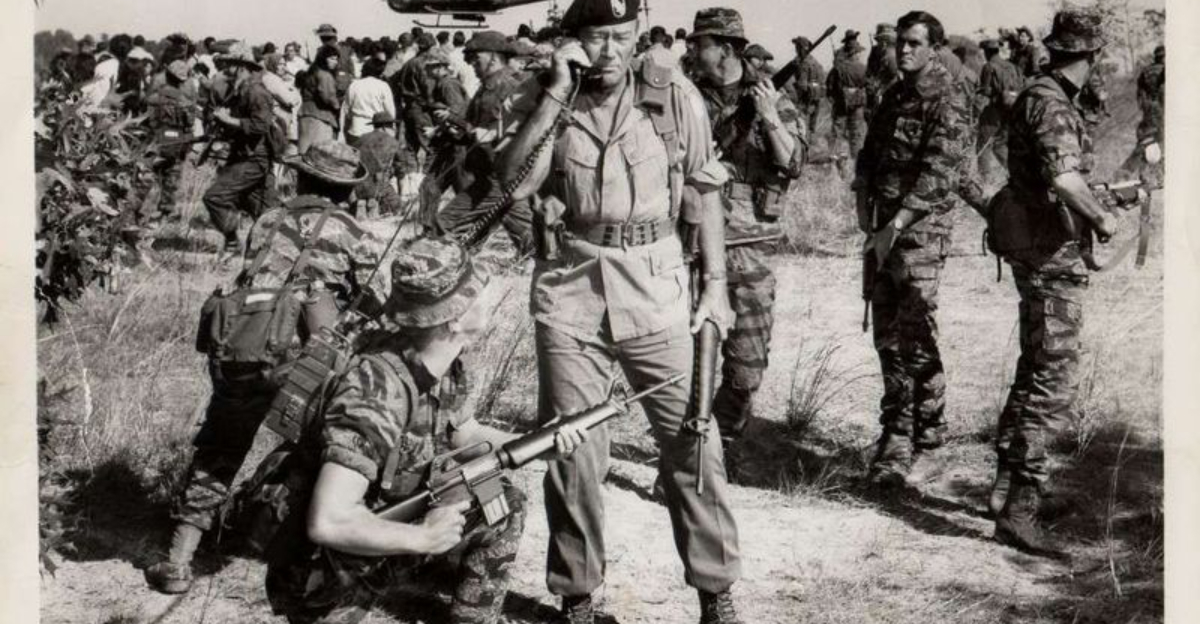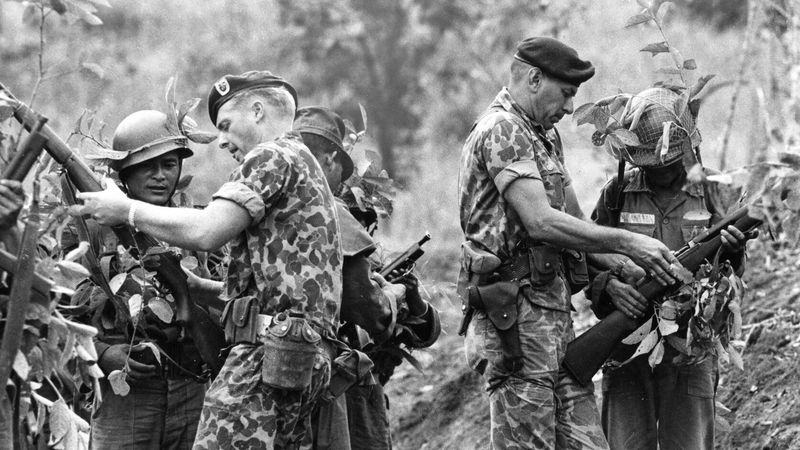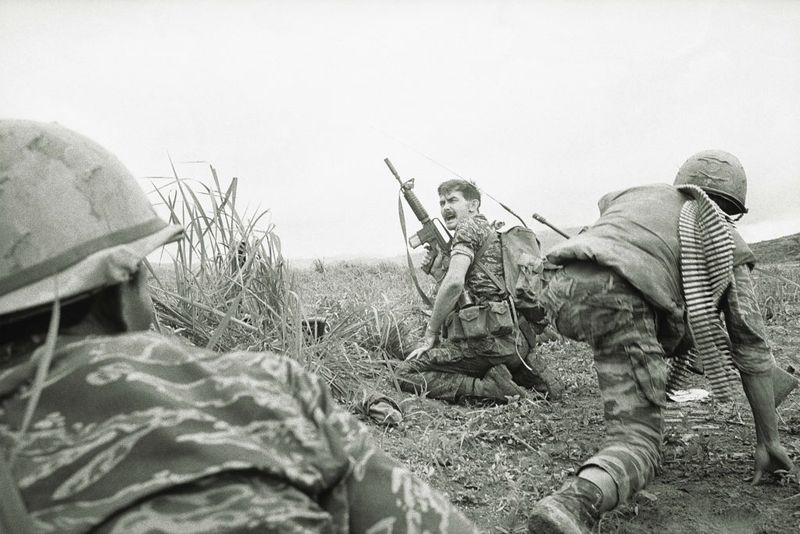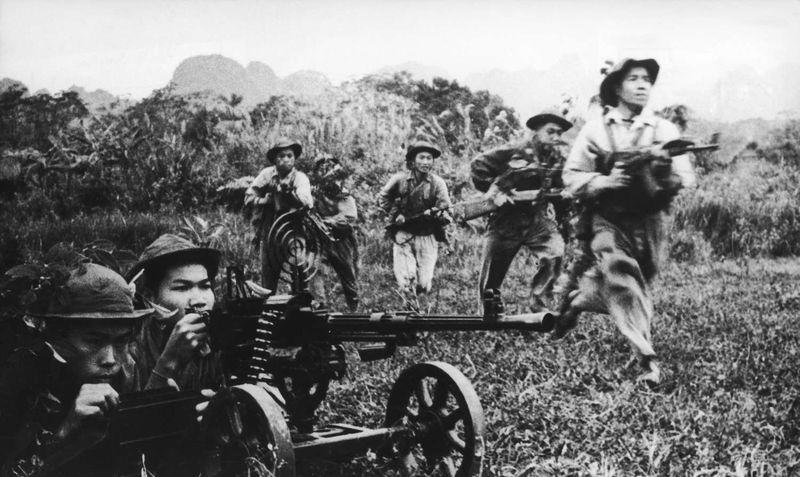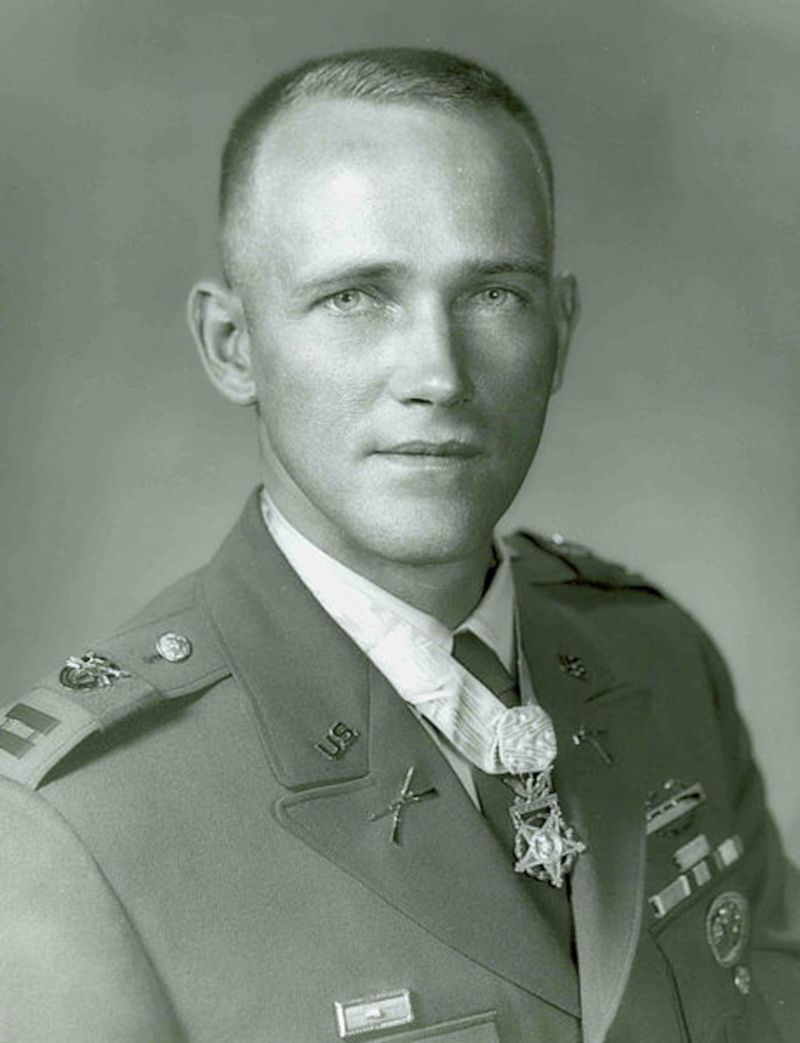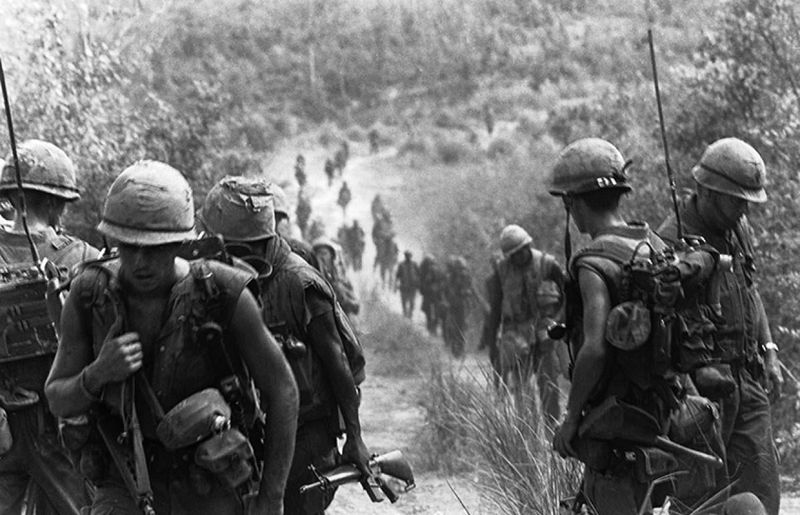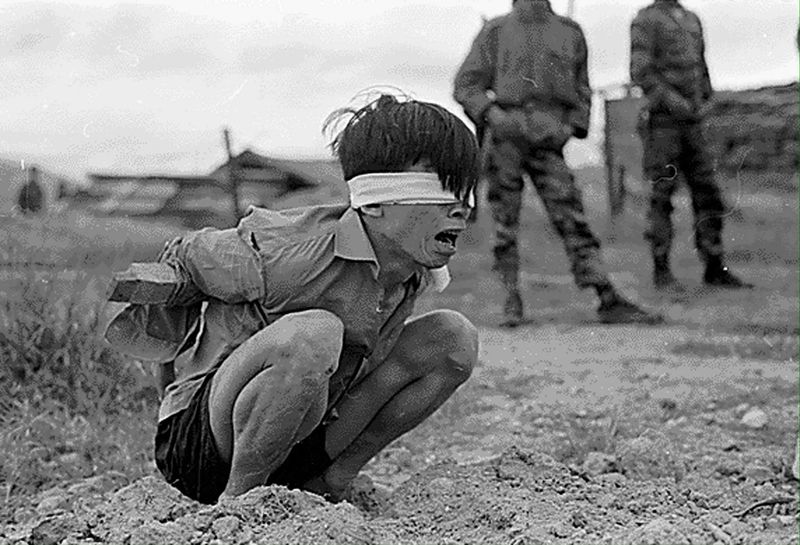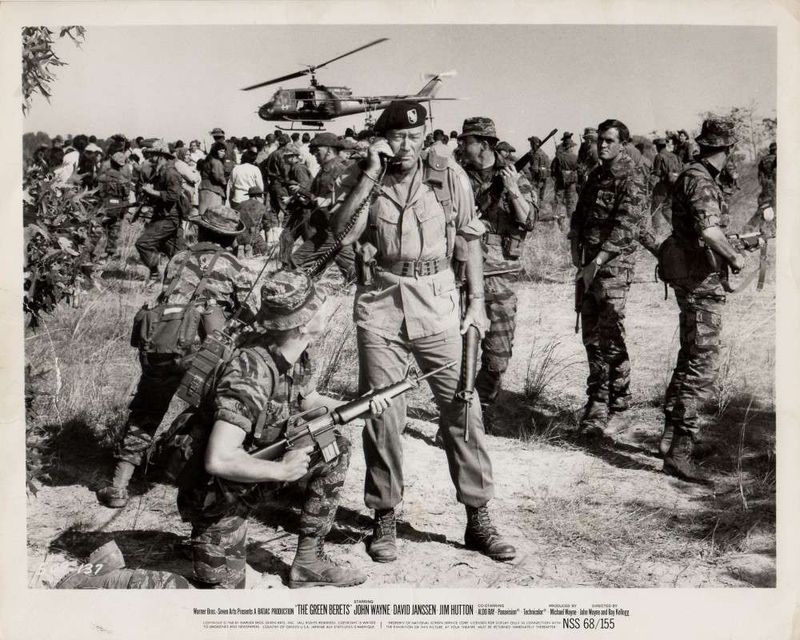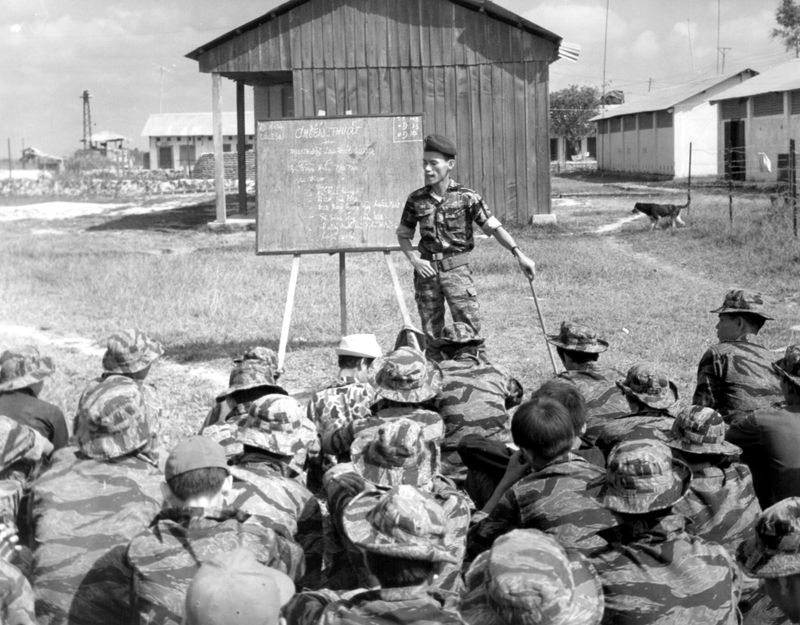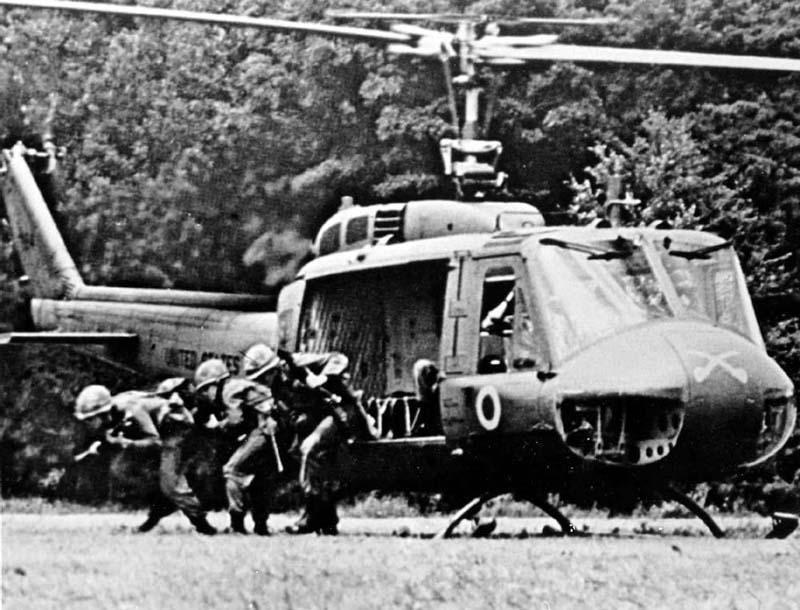In the early hours of July 1964, a small group of American Green Berets faced overwhelming odds in a remote Vietnamese camp. The Battle of Nam Dong became one of the most significant early engagements of American special forces in Vietnam. What happened during those desperate hours would shape military tactics, earn America’s highest military honor, and demonstrate the remarkable courage of outnumbered soldiers fighting for survival.
1. Date & Location
Summer monsoon rains pounded the camp nestled in the mountainous jungle near the Laotian border. Nam Dong sat in a vulnerable position – just 32 miles from Da Nang but surrounded by territory controlled by communist forces.
The camp housed indigenous tribesmen trained by Special Forces to defend their homeland against communist infiltration. Its strategic location made it a prime target for Viet Cong forces seeking to demonstrate their growing power in South Vietnam’s countryside.
Few Americans realized this obscure outpost would soon become the site of a desperate struggle that would test the limits of Special Forces training and courage.
2. Defenders
Captain Donlon’s team faced daunting odds with their small contingent of Green Berets. The Americans worked alongside local Vietnamese fighters they had personally trained in counterinsurgency tactics.
Australian Warrant Officer Kevin Conway joined the defenders, representing his country’s growing commitment to the conflict. The diverse group formed an unlikely brotherhood, bound by the shared danger of their isolated position.
Most of the indigenous fighters belonged to the Montagnard ethnic minority groups who maintained an uneasy relationship with the Vietnamese government but found common cause against communist forces threatening their traditional way of life.
3. Attackers
Ghostlike figures emerged from the jungle at 2:26 AM, shattering the night with explosive fury. Communist forces had meticulously planned their attack, positioning mortar teams on nearby hills while assault groups moved silently into jump-off positions around the camp perimeter.
The attacking force combined local Viet Cong guerrillas with regular North Vietnamese Army (PAVN) soldiers. Their numerical advantage was overwhelming – nearly three attackers for every defender inside the wire.
Intelligence later revealed a suspected Chinese communist adviser had helped coordinate the assault, highlighting the international dimensions of what appeared to be a local guerrilla action.
4. First Medal of Honor
Blood streaming from multiple shrapnel wounds, Captain Donlon refused evacuation as he crawled between defensive positions. Despite injuries to his stomach, shoulder, and face, he rallied his men while personally firing at advancing enemy soldiers.
When the team’s medic was wounded, Donlon administered life-saving treatment while simultaneously directing artillery fire onto approaching enemy forces. His extraordinary heroism included retrieving ammunition from exposed positions and carrying wounded men to safety through intense enemy fire.
President Lyndon Johnson presented Donlon with the Medal of Honor in December 1964, making him the first recipient from the Vietnam conflict.
5. Casualties (Allied)
The human cost of Nam Dong’s defense proved devastating for the small garrison. Sergeant First Class Gabriel Alamo died while manning a mortar position, continuing to fire even as enemy troops swarmed his location.
Australian Warrant Officer Kevin Conway became his country’s first combat fatality in Vietnam, killed while attempting to reach an ammunition storage bunker. Indigenous fighters suffered the heaviest losses as they formed the front line of the camp’s defense.
Many wounded defenders continued fighting despite serious injuries, knowing that evacuation was impossible until daylight arrived and air support could secure a landing zone for medical helicopters.
6. Casualties (Enemy)
Dawn revealed the battle’s grim toll as enemy bodies littered the perimeter. The actual communist casualties likely numbered far higher, as Viet Cong forces typically removed their dead when possible to conceal losses.
Blood trails leading into the jungle suggested dozens more had been wounded and dragged away during the withdrawal. Captured documents from a dead officer indicated the attack force had expected to overwhelm the camp quickly but instead met unexpectedly fierce resistance.
Interrogation of prisoners later revealed the attacking force had been promised an easy victory and was unprepared for the determined defense mounted by the Special Forces-led garrison.
7. Reinforcements & Resupply
Salvation came from above as pilots braved intense ground fire to deliver critical supplies. The Caribou transport plane made a daring low-altitude pass, pushing out ammunition crates that drifted down on parachutes – some landing perilously close to enemy positions.
Marine helicopter pilots later executed a remarkable feat, landing their vulnerable UH-34D “Seahorse” helicopters in a hastily cleared area while gunships provided covering fire. A-1 Skyraiders swooped low, their propellers growling as they unleashed rockets and cannon fire on enemy positions surrounding the landing zone.
The reinforcements arrived expecting to conduct a recovery operation but instead joined a continuing battle.
8. Tactical Outcome
Victory against overwhelming odds stunned military observers accustomed to hearing about Viet Cong successes. The defenders had maintained control of their position despite being outnumbered nearly three-to-one by an enemy force that enjoyed the advantage of surprise.
Nam Dong’s successful defense represented a textbook application of Special Forces doctrine – multiplying combat effectiveness through training indigenous forces and applying concentrated firepower at critical moments. Captured enemy documents revealed the attack had been intended as a propaganda showcase of communist military prowess.
Instead, the battle became a powerful symbol of American Special Forces capabilities in unconventional warfare environments.
9. Strategic Significance
Military planners in Washington took note of how twelve Green Berets had effectively led indigenous fighters against a numerically superior enemy force. The battle validated the entire Civilian Irregular Defense Group concept as a cost-effective method of securing remote areas.
President Johnson personally cited Nam Dong when advocating for expanded Special Forces operations. The battle demonstrated that properly trained and supported local forces could effectively resist communist insurgents even in isolated border regions.
Nam Dong became a template for the establishment of similar camps throughout Vietnam’s strategic highlands and border areas, fundamentally shaping America’s early military strategy in the conflict.
10. Cultural Legacy
John Wayne’s patriotic war film brought Nam Dong’s desperate fight to American movie theaters. Though heavily fictionalized, the film’s climactic battle scene introduced millions to the concept of Special Forces operating from remote camps deep in hostile territory.
Veterans of the actual battle had mixed reactions to Hollywood’s portrayal. Many noted the film captured the emotional intensity of the fight while taking significant liberties with tactical details.
Beyond cinema, Nam Dong became enshrined in Special Forces training curriculum. Modern Green Berets still study the battle as a case study in small-unit leadership and the force-multiplying effect of properly trained indigenous fighters.
